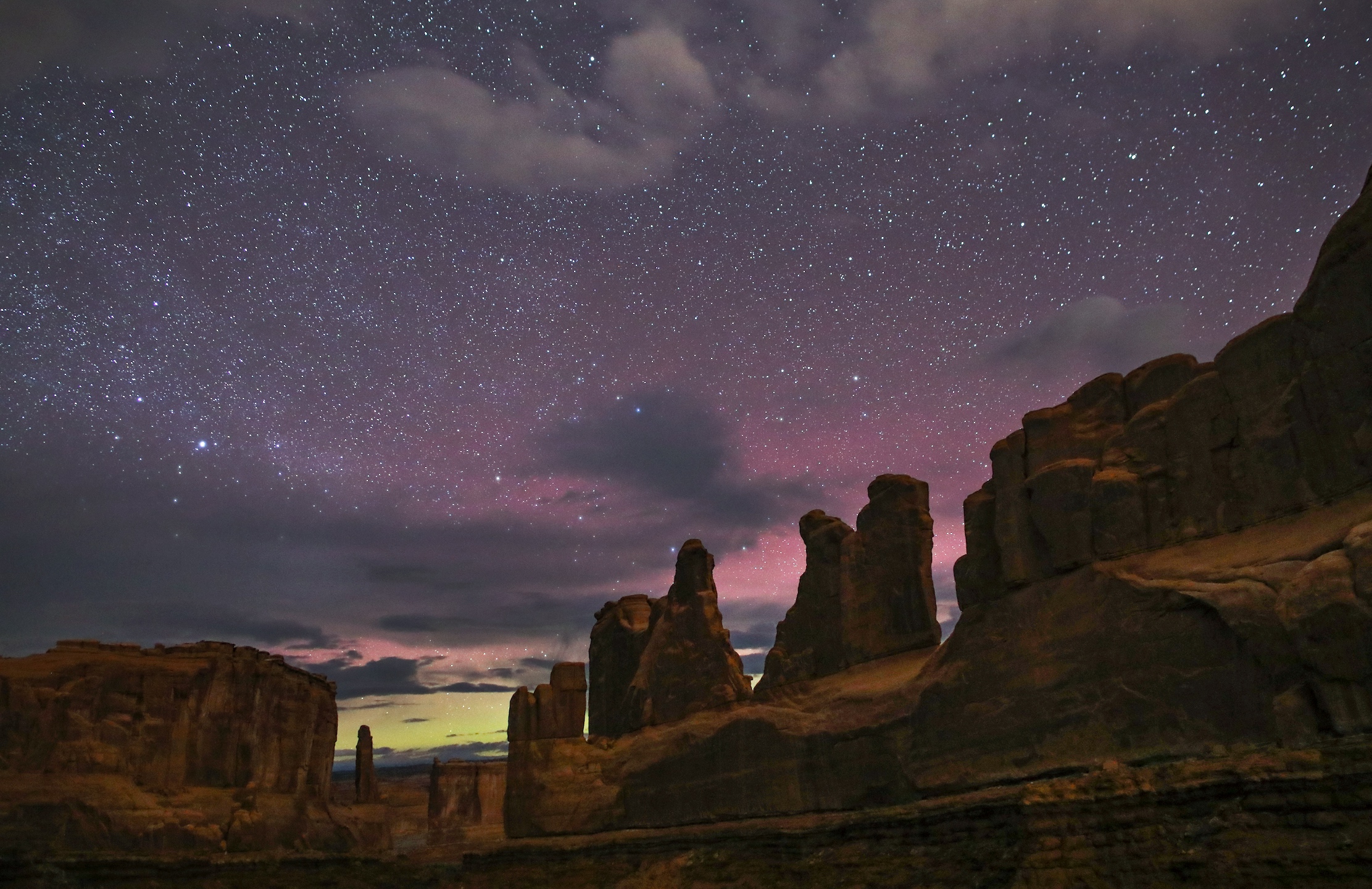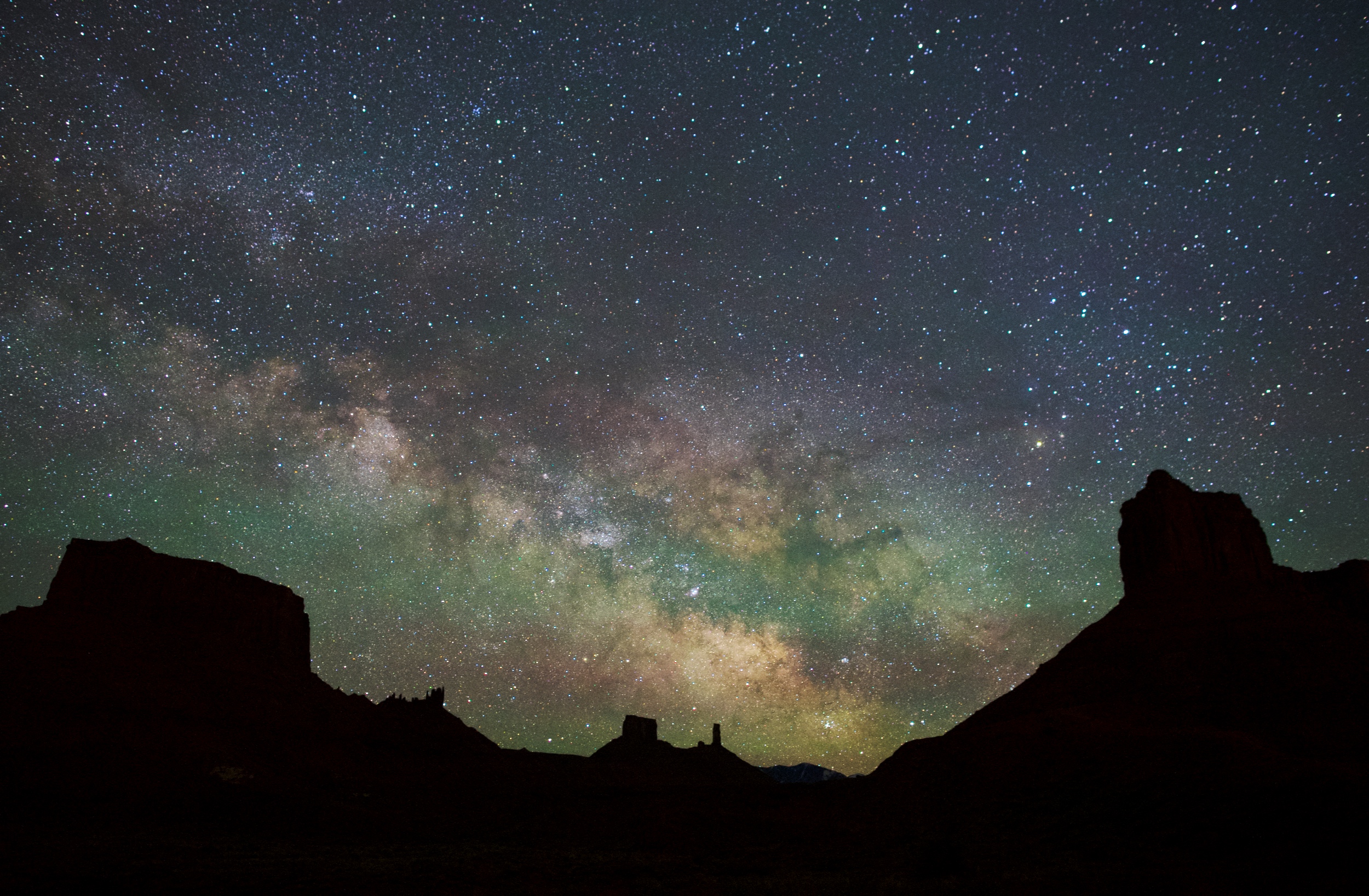
Auroral light over Arches National Park, Utah on March 23, 2023 | Credit: ©2023 Bill Dunford | Full-size image and downloads
This year was a very good one for auroras. Exactly a month before the previous show, I caught this view in Arches National Park — which is very far south for this kind of thing. Like several auroral encounters I've had before, this one started when I noticed a faint glow on the horizon that looked like light pollution. My first reaction was that familiar, dull heartache at the ever-accelerating retreat of dark skies. Then I realized: there are absolutely no cities in that direction. It's nothing but twisting redrock desert canyons for many miles. I set up the camera, snapped a rough shot, and sure enough there they were. (I may or may not do a short-but-questionable dance when this happens.)
I left the camera shutter open for several seconds to drink in the light, and the result looked almost like a spreading dawn even though it was the middle of the night.
The reason behind this outpouring of generosity from the sky is the Sun and its 11-year cycle of activity. Right now, we're nearing solar maximum, the point where solar storms are most common and most energetic, raining charged particles on the planets. This is the best part, because it means 2024 should be even better.

The central core of the Milky Way galaxy and green airglow near Moab, Utah on May 15, 2023 | Credit: ©2023 Bill Dunford | Full-size image and downloads
More airglow. It's a similar phenomenon to aurora, and sometimes the two events coincide. Either way, in the darkness a little glimmer goes a long way.